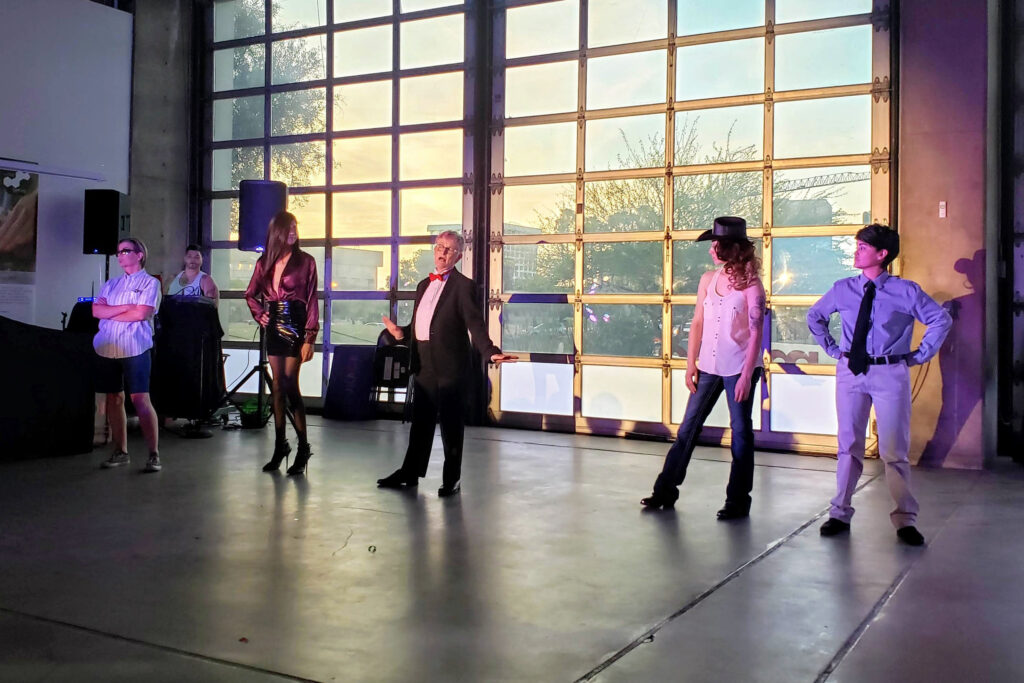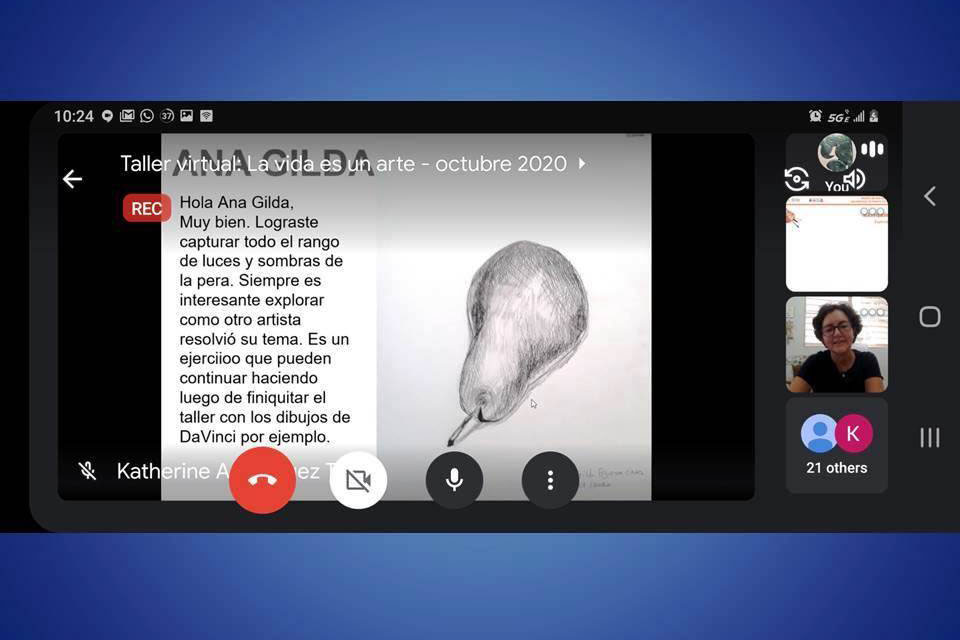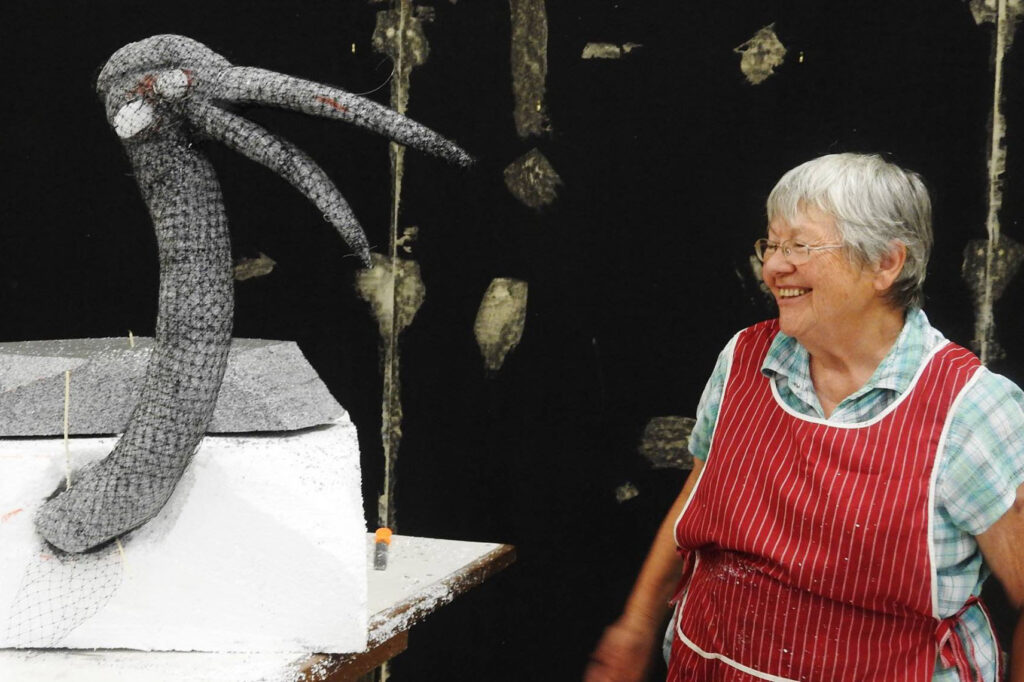Creative aging is the practice of using artistic and creative engagement to enhance well-being, boost physical and cognitive abilities, and enrich our overall quality of life as we age.
Creative aging is more than just a fulfilling pastime; it’s a crucial element of a healthy, vibrant life. Creative aging programming can take many forms, including but not limited to art classes, theater workshops, storytelling sessions, music-making, and intergenerational arts projects. These programs not only support healthy aging, but also break down stereotypes by showing that growth and creativity are possible at any age.
Creative aging is a proven way to shatter chronic loneliness, which affects 25% of older adults and is often deadlier than smoking.
This staggering statistic from a recent advisory from the National Library of Medicine is one of hundreds which show the physical and mental health effects of aging alone. Social isolation not only diminishes our health and well-being, but it also fuels negative stereotypes and perspectives around aging. Ageism distorts our view of ourselves and others. Creative aging enables us to paint a different picture; a new canvas where connection and creativity is woven into every chapter of our lives.
What Can Creative Aging Look Like?
It can look like whatever you imagine! At Lifetime Arts, we’ve seen our partners dream up innovative programs in every art form imaginable. The links below are a few case studies demonstrating diverse approaches to creative aging classes. We’re always collecting new creative aging stories. Share yours today!


School of Drag at MOCA
Tucson
Not all creative aging programs are painting! Learn how older adults at MOCA Tucson celebrated identity, art, and performance through a transformative journey.

Online Programming at Museo de Historia, Antropología, y arte
Through careful planning and continuous refinement, La Vida es un Arte 2.0 drew raves from 40 participants who learned how to draw with materials found in the home.

The Fullness of Time: Exploring the Art and Gifts of Aging
When older adult students at Johnson County Public Library requested sculpture classes that couldn’t be held in their building, library staff knew it was time to build partnerships.
Talking About Creative Aging: Common Terms
Ageism
Stereotyping, prejudice, or discrimination against individuals or groups based on their age. Creative aging programs aim to combat ageism by promoting positive, empowering narratives about aging and celebrating our life-long capacity to grow and achieve new things.
Culminating Event (or “Public Sharing”)
The final presentation or sharing of work created by participants in a creative aging program. This event celebrates participants’ efforts and artistic achievements, providing an opportunity for public recognition and personal pride.
Intergenerational
Stereotyping, prejudice, or discrimination against individuals or groups based on their age. Creative aging programs aim to combat ageism by promoting positive, empowering narratives about aging and celebrating our life-long capacity to grow and achieve new things.
Older Adults
Individuals aged 55 and older. The term “older adult” is used rather than “senior”, which can carry negative connotations or reinforce stereotypes about aging. By using “older adult,” we move away from ageist language and acknowledge that aging is not a homogenous experience.
Rewirement
A concept that redefines traditional retirement by encouraging older adults to continue engaging in meaningful work, learning, and creative activities. Rewirement emphasizes the idea of lifelong growth, contribution, and reinvention.
Skill-building
Programs and activities designed to develop specific abilities in the arts or other areas over time. Skill building programs are focused on learning and creative growth, not just doing.
Teaching Artist
A practicing artist with expertise in both their art form and in education, who designs and facilitates creative aging programs for older adults, blending artistic practice with teaching to create impactful learning experiences.
Dementia-Capable
Programs and environments designed to accommodate and support individuals living with dementia, ensuring that they can meaningfully participate in creative activities and social interactions, often through specialized approaches and techniques.
Cross-Sector / Multi-Sector
Collaborations or initiatives that involve partnerships between different sectors (e.g., arts, healthcare, aging services) to create more holistic and impactful creative aging programs that address various aspects of older adults’ well-being.
Mastery
The process by which older adults develop proficiency in a particular artistic skill or creative practice, often through consistent learning, practice, and feedback, reflecting the concept that learning and growth are lifelong processes.
Responsive Programming
Programs that are tailored to the specific needs, interests, and abilities of older adults. Responsive programming is flexible and adaptable, ensuring that participants feel heard, valued, and supported in their creative endeavors.
Sequential
A structured approach to learning that unfolds progressively over time, with one lesson or skill building on the previous. In creative aging, this refers to curriculum-based programs that help participants develop their artistic abilities through intentional, step-by-step instruction.
Social Engagement
Opportunities for meaningful connection and interaction with others, while learning and making. In creative aging programs this can take the form of group critique, activities that stimulate creativity using exercises that encourage sharing, and working in pairs or small groups. This term is often confused with “socializing,” which doesn’t engage participants around the art.
Universal Design
A philosophy of creating programs, spaces, and products that are accessible and usable by people of all abilities and ages. In creative aging, this ensures that programs are inclusive and accommodating to the diverse physical, cognitive, and sensory needs of older adults.

